Novel Water Probe for High-Frequency Focused Transducer Applied to Scanning Acoustic Microscopy System: Simulation and Experimental Investigation
Abstract
:1. Introduction
2. Schematic of Scanning Acoustic Microscopy (SAM) System and Focal Length Calculation
2.1. Scanning Acoustic Microscopy (SAM) System
2.2. Focal Length Calculation of the Transducer
3. Modeling and Simulation Setup of Waterstream
3.1. Water Domain Modeling
3.2. Governing Equations
3.3. Simulation Setup
4. Simulation Results and Waterstream Prototype
4.1. Simulation Results
4.2. Waterstream Prototype
5. Experimental Results
5.1. Waterstream for the TSAM−400 System
5.2. Waterstream for the W−FSAM System
6. Conclusions
Supplementary Materials
Author Contributions
Funding
Institutional Review Board Statement
Informed Consent Statement
Data Availability Statement
Conflicts of Interest
References
- Lemons, R.; Quate, C.F. Acoustic microscope—Scanning version. Appl. Phys. Lett. 1974, 24, 163–165. [Google Scholar] [CrossRef]
- Lemon, R. Acoustic microscope: Biomedical applications. Science 1975, 188, 905–911. [Google Scholar] [CrossRef]
- Korpel, A.; Kessler, L.; Palermo, P. Acoustic microscope operating at 100 MHz. Nature 1971, 232, 110–111. [Google Scholar] [CrossRef] [PubMed]
- Ito, K.; Yoshida, K.; Maruyama, H.; Mamou, J.; Yamaguchi, T. Acoustic impedance analysis with high-frequency ultrasound for identification of fatty acid species in the liver. Ultrasound Med. Biol. 2017, 43, 700–711. [Google Scholar] [CrossRef] [PubMed]
- Saijo, Y.; Jørgensen, C.S.; Mondek, P.; Šefránek, V.; Paaske, W. Acoustic inhomogeneity of carotid arterial plaques determined by GHz frequency range acoustic microscopy. Ultrasound Med. Biol. 2002, 28, 933–937. [Google Scholar] [CrossRef] [PubMed]
- Hatori, K.; Saijo, Y.; Hagiwara, Y.; Naganuma, Y.; Igari, K.; Iikubo, M.; Kobayashi, K.; Sasaki, K. Acoustic diagnosis device for dentistry. In Interface Oral Health Science 2016; Springer: Singapore, 2017; pp. 181–201. [Google Scholar]
- Hasegawa, K.; Turner, C.; Recker, R.; Wu, E.; Burr, D. Elastic properties of osteoporotic bone measured by scanning acoustic microscopy. Bone 1995, 16, 85–90. [Google Scholar] [CrossRef] [PubMed]
- Kundu, T.; Bereiter-Hahn, J.; Karl, I. Cell property determination from the acoustic microscope generated voltage versus frequency curves. Biophys. J. 2000, 78, 2270–2279. [Google Scholar] [CrossRef] [PubMed]
- Soon, T.T.K.; Chean, T.W.; Yamada, H.; Takahashi, K.; Hozumi, N.; Kobayashi, K.; Yoshida, S. Effects of anticancer drugs on glia–glioma brain tumor model characterized by acoustic impedance microscopy. Jpn. J. Appl. Phys. 2017, 56, 07JF15. [Google Scholar] [CrossRef]
- Litniewski, J.; Bereiter-Hahn, J. Measurements of cells in culture by scanning acoustic microscopy. J. Microsc. 1990, 158, 95–107. [Google Scholar] [CrossRef]
- Bereiter-Hahn, J.; Blase, C.; Kundu, T.; Wagner, O. Cells as seen with the acoustic microscope. In Acoustical Imaging, Springer: Berlin/Heidelberg, Germany, 2002; pp 83–90.
- Nagaoka, R.; Kobayashi, K.; Arakawa, M.; Hasegawa, H.; Saijo, Y. Correction of phase rotation in pulse spectrum method for scanning acoustic microscopy and its application to measurements of cells. Ultrasonics 2019, 99, 105949. [Google Scholar] [CrossRef]
- Tumšys, O.; Mažeika, L.; Kažys, R.; Raišutis, R. Application of the signal processing in the case of ultrasonic inspection of PCB components. Ultragarsas/Ultrasound 2007, 62, 16–19. [Google Scholar]
- Wolter, K.-J.; Speck, M.; Heinze, R. Reliability Analysis in Microelectronic Packaging by Acoustic Microscopy. In Proceedings of the 28th International Spring Seminar on Electronics Technology: Meeting the Challenges of Electronics Technology Progress, Wiener Neustadt, Austria, 19–20 May 2005; pp. 436–443. [Google Scholar]
- Jhang, K.; Jang, H.; Park, B.; Ha, J.; Park, I.; Kim, K. Wavelet analysis based deconvolution to improve the resolution of scanning acoustic microscope images for the inspection of thin die layer in semiconductor. NDT E Int. 2002, 35, 549–557. [Google Scholar] [CrossRef]
- Wang, W.; Lu, X.; He, Z.; Shi, T. Using convolutional neural network for intelligent SAM inspection of flip chips. Meas. Sci. Technol. 2021, 32, 115022. [Google Scholar] [CrossRef]
- Pham, V.H.; Choi, J.; Vo, T.H.; Vu, D.D.; Park, S.; Lee, B.-i.; Oh, J. An innovative application of double slider-crank mechanism in efficient of the scanning acoustic microscopy system. Mech. Based Des. Struct. Mach. 2023, 52, 4066–4076. [Google Scholar] [CrossRef]
- Twerdowski, E.; von Buttlar, M.; Razek, N.; Wannemacher, R.; Schindler, A.; Grill, W. Combined surface-focused acoustic microscopy in transmission and scanning ultrasonic holography. Ultrasonics 2006, 44, e1301–e1305. [Google Scholar] [CrossRef]
- Noh, H.-s.; Moon, K.-s.; Cannon, A.; Hesketh, P.J.; Wong, C. Wafer bonding using microwave heating of parylene intermediate layers. J. Micromech. Microeng. 2004, 14, 625. [Google Scholar] [CrossRef]
- Morokov, E.; Levin, V.; Chernov, A.; Shanygin, A. High resolution ply-by-ply ultrasound imaging of impact damage in thick CFRP laminates by high-frequency acoustic microscopy. Compos. Struct. 2021, 256, 113102. [Google Scholar] [CrossRef]
- Yılmaz, B.; Jasiūnienė, E. Advanced ultrasonic NDT for weak bond detection in composite-adhesive bonded structures. Int. J. Adhes. Adhes. 2020, 102, 102675. [Google Scholar] [CrossRef]
- Kwak, D.R.; Yoshida, S.; Sasaki, T.; Todd, J.A.; Park, I.K. Evaluation of near-surface stress distributions in dissimilar welded joint by scanning acoustic microscopy. Ultrasonics 2016, 67, 9–17. [Google Scholar] [CrossRef]
- Poorhaydari, K. A Comprehensive Examination of High-Temperature Hydrogen Attack—A Review of over a Century of Investigations. J. Mater. Eng. Perform. 2021, 30, 7875–7908. [Google Scholar] [CrossRef]
- Piwowarczyk, T.; Korzeniowski, M.; Majewski, D. Possibilities of using scanning acoustic microscopy to analyze incompatibilities in braze welded joints. Weld. Technol. Rev. 2019, 91, 7–15. [Google Scholar] [CrossRef]
- Kubit, A.; Trzepiecinski, T.; Faes, K.; Drabczyk, M.; Bochnowski, W.; Korzeniowski, M. Analysis of the effect of structural defects on the fatigue strength of RFSSW joints using C-scan scanning acoustic microscopy and SEM. Fatigue Fract. Eng. Mater. Struct. 2019, 42, 1308–1321. [Google Scholar] [CrossRef]
- Sun, X.; Zeng, K.; He, X.; Zhang, L. Ultrasonic C-scan imaging and analysis of the mechanical properties of resistance spot-welded joints of stainless steel. Nondestruct. Test. Eval. 2017, 32, 242–254. [Google Scholar] [CrossRef]
- Alig, I.; Tadjbach, S.; Krüger, P.; Oehler, H.; Lellinger, D. Characterization of coating systems by scanning acoustic microscopy: Debonding, blistering and surface topology. Prog. Org. Coat. 2009, 64, 112–119. [Google Scholar] [CrossRef]
- Bauermann, L.P.; Mesquita, L.; Bischoff, C.; Drews, M.; Fitz, O.; Heuer, A.; Biro, D. Scanning acoustic microscopy as a non-destructive imaging tool to localize defects inside battery cells. J. Power Sources Adv. 2020, 6, 100035. [Google Scholar] [CrossRef]
- Pham, V.H.; Vo, T.H.; Vu, D.D.; Choi, J.; Park, S.; Nguyen, D.T.; Lee, B.-I.; Oh, J. Development of Scanning Acoustic Microscopy System for Evaluating the Resistance Spot Welding Quality. Res. Nondestruct. Eval. 2022, 33, 123–137. [Google Scholar] [CrossRef]
- Kino, G.S. Acoustic Waves: Devices, Imaging, and Analog Signal Processing; Prentice-Hall: Englewood Cliffs, NJ, USA, 1987; Volume 107. [Google Scholar]
- Rupitsch, S.J.; Zagar, B.G. Acoustic microscopy technique to precisely locate layer delamination. IEEE Trans. Instrum. Meas. 2007, 56, 1429–1434. [Google Scholar] [CrossRef]
- Yu, H. Scanning acoustic microscopy for material evaluation. Appl. Microsc. 2020, 50, 1–11. [Google Scholar] [CrossRef]
- Pham, V.H.; Vo, T.H.; Vu, D.D.; Choi, J.; Park, S.; Mondal, S.; Lee, B.-i.; Oh, J. Development of fast scanning module with a novel bubble solution applied to scanning acoustic microscopy system for industrial nondestructive inspection. Expert Syst. Appl. 2023, 228, 120273. [Google Scholar] [CrossRef]
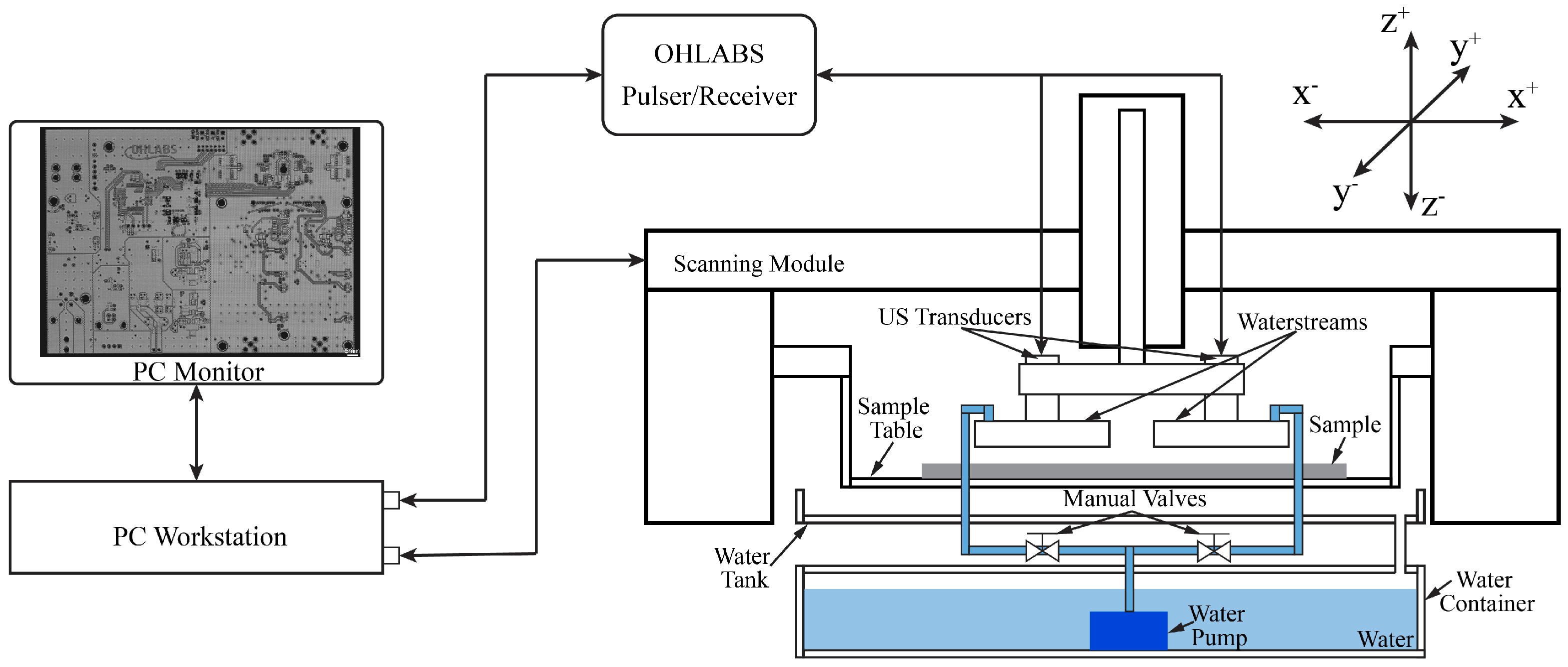

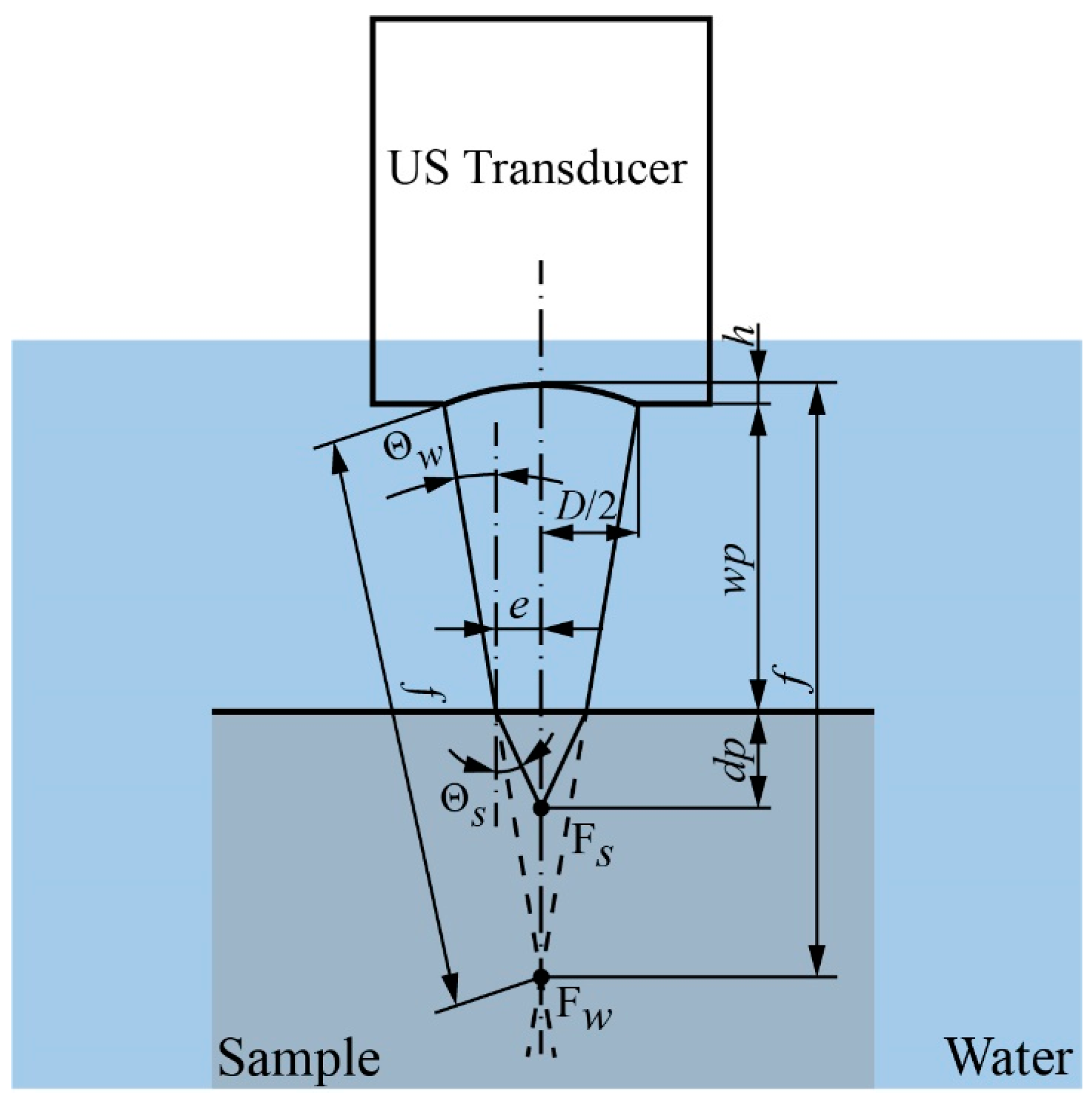
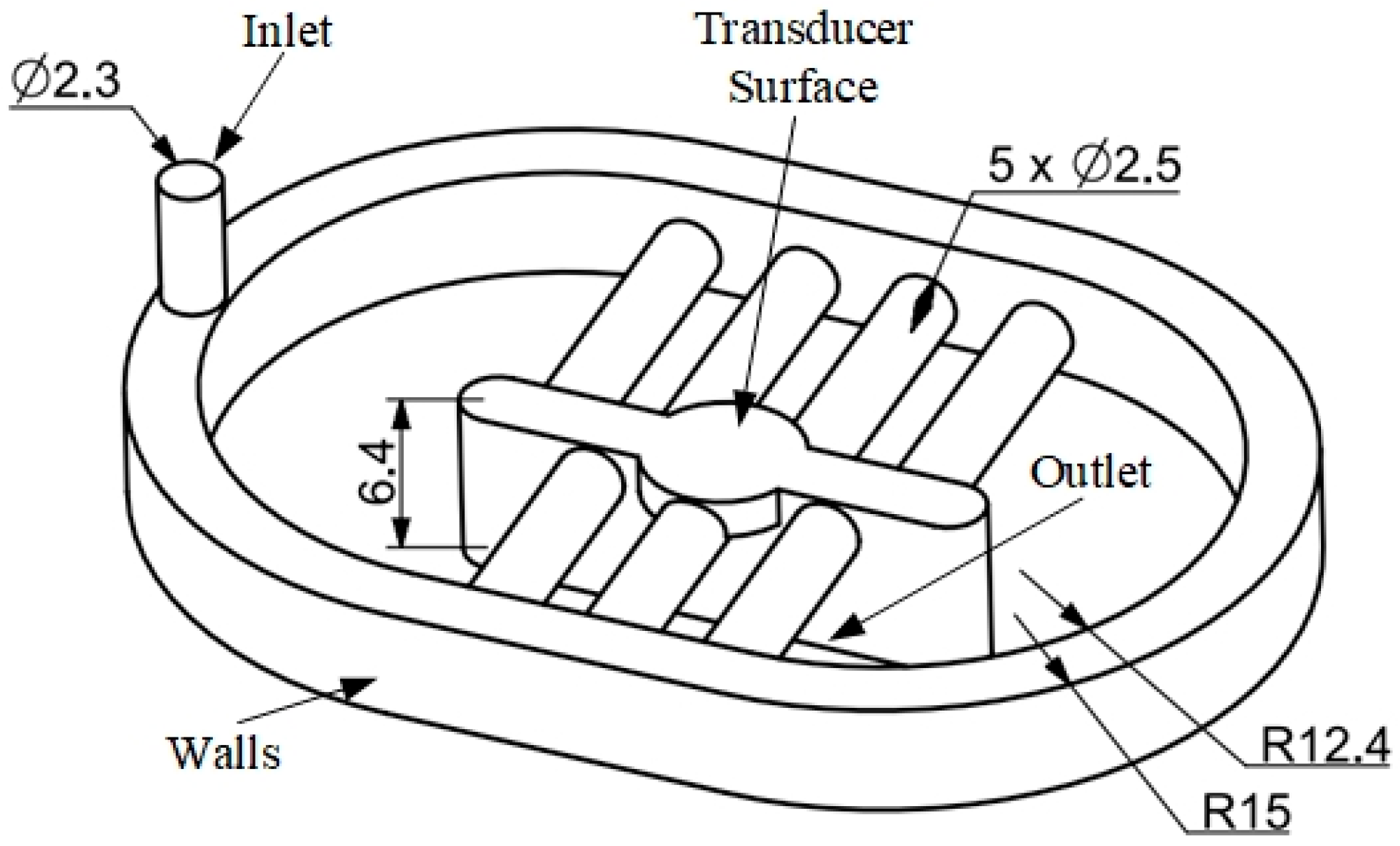
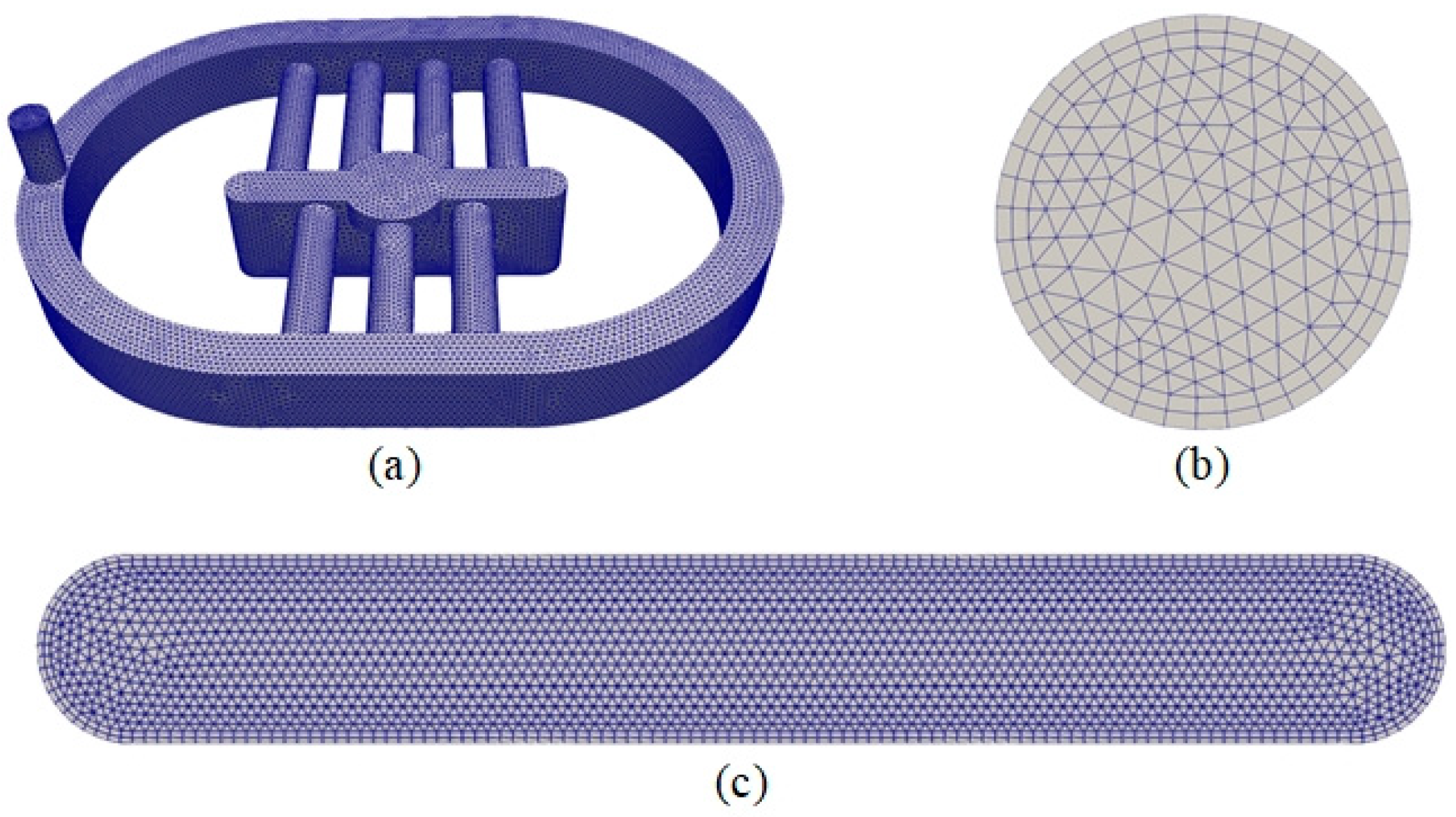
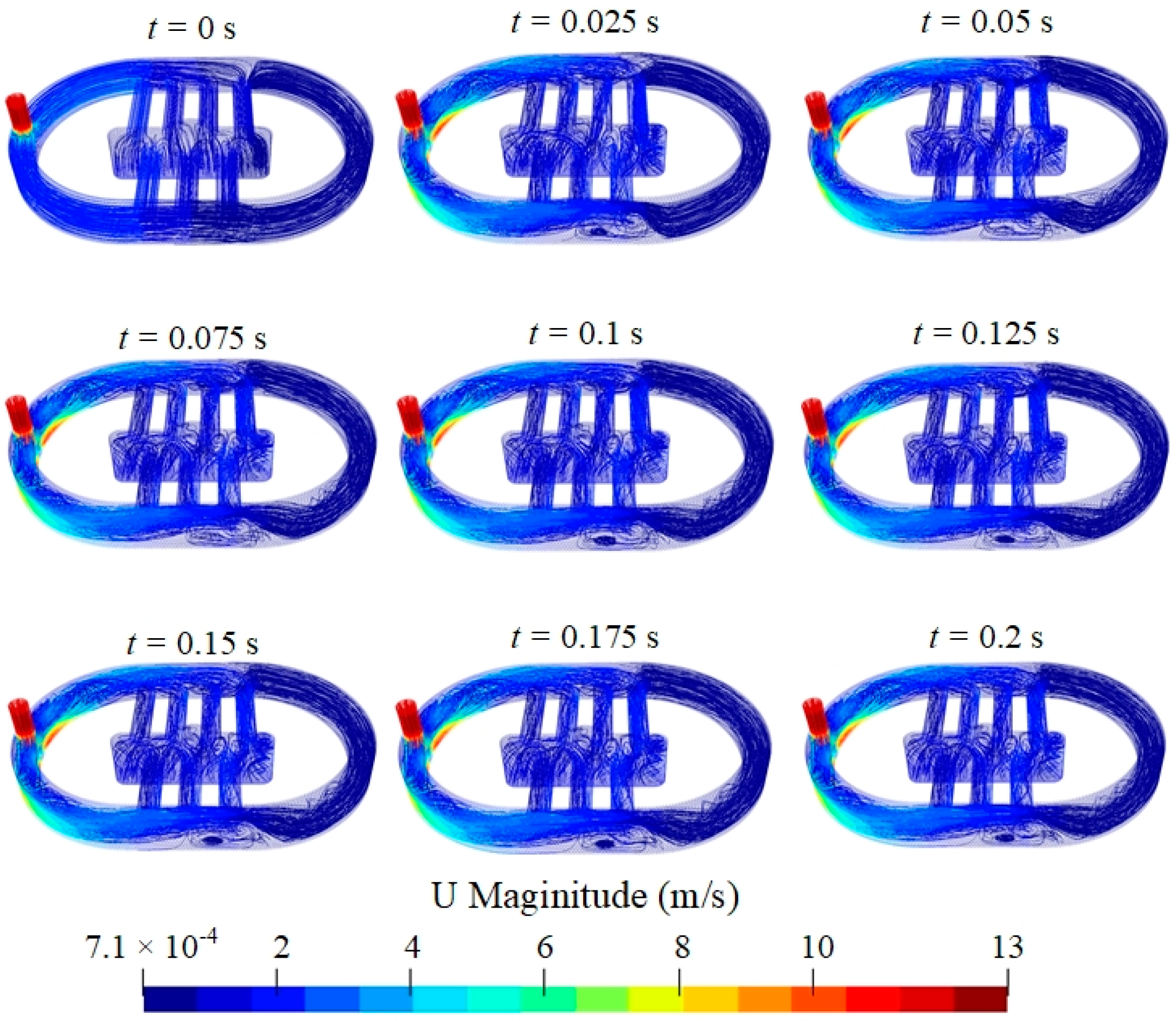
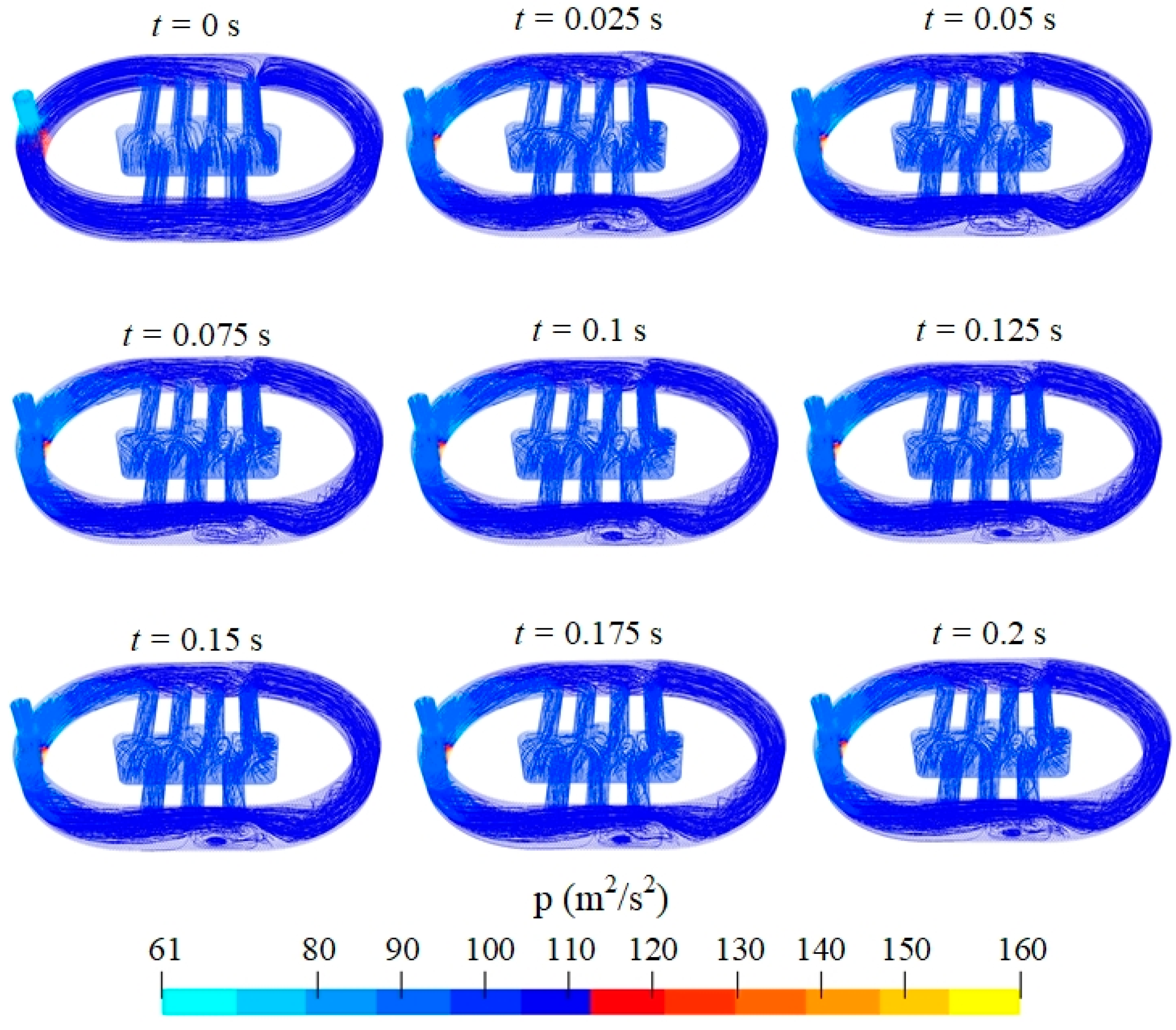
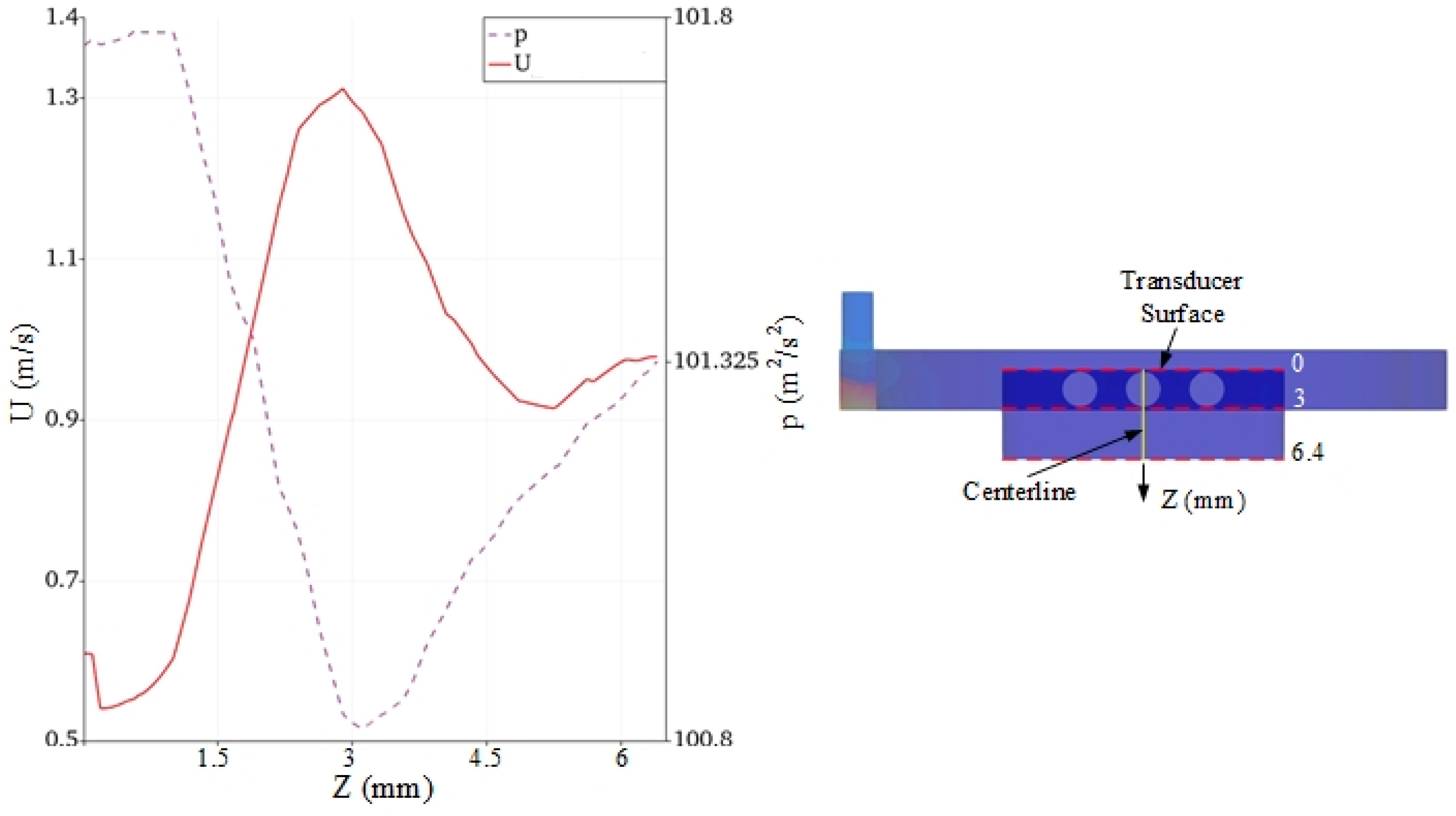
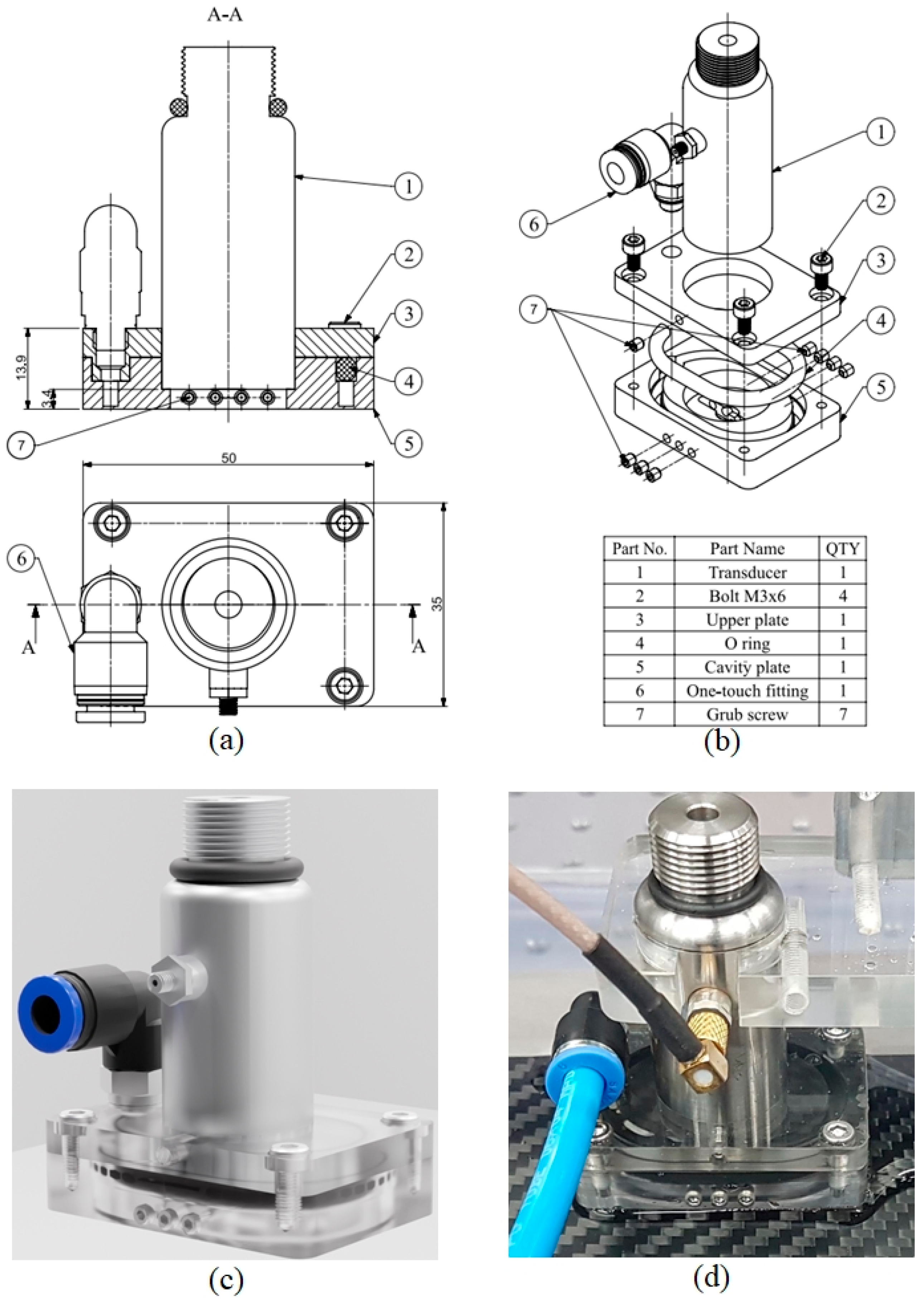
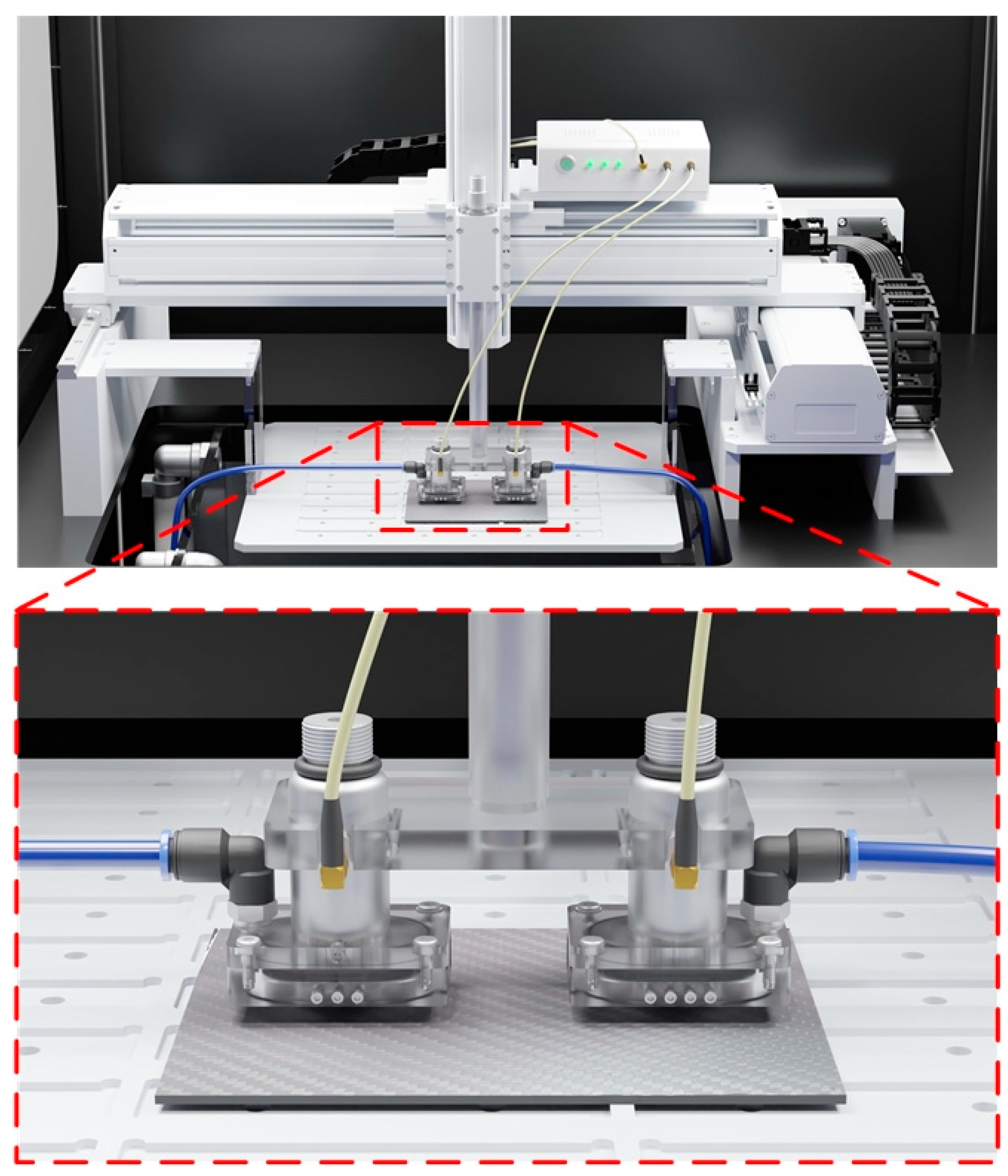
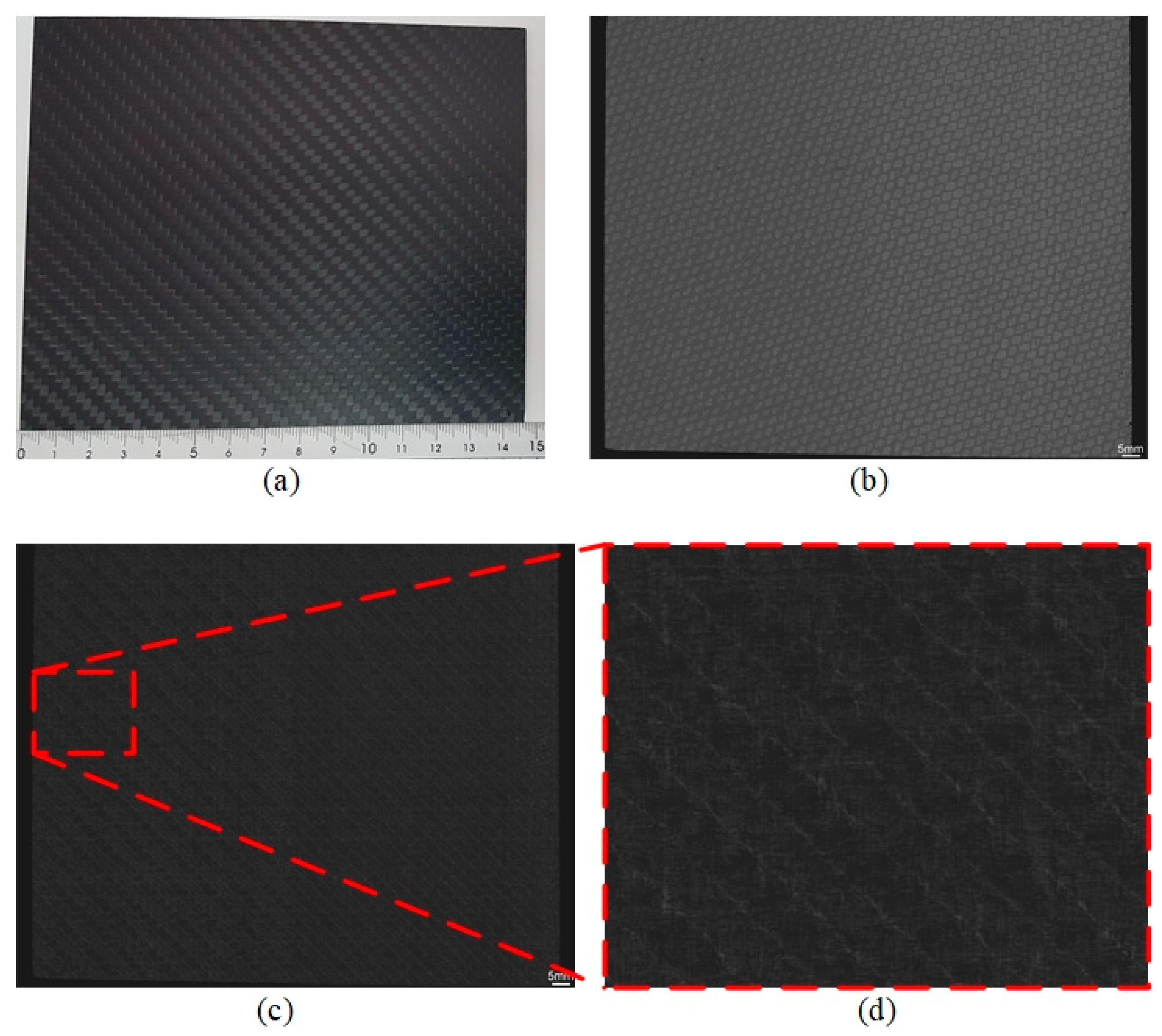
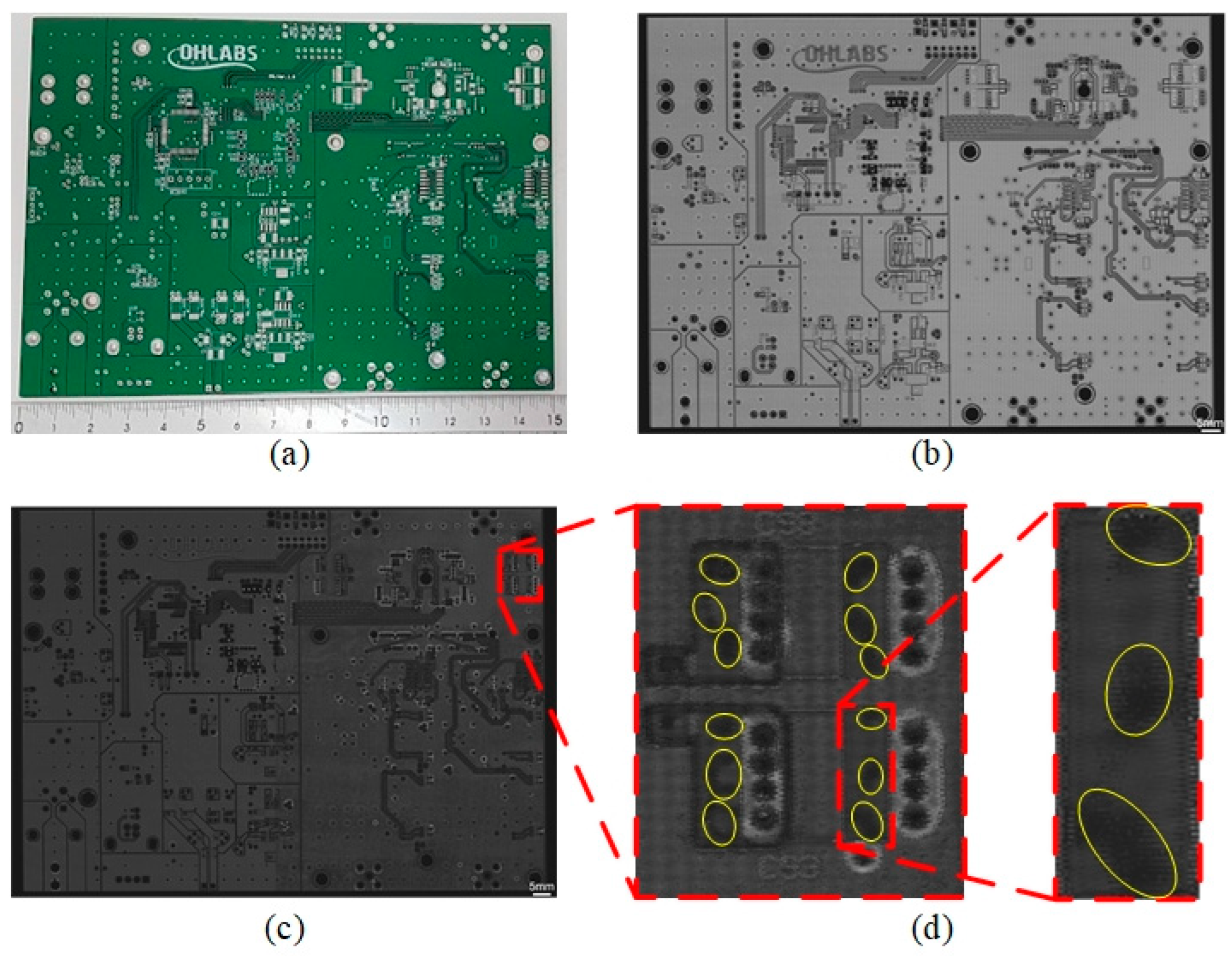
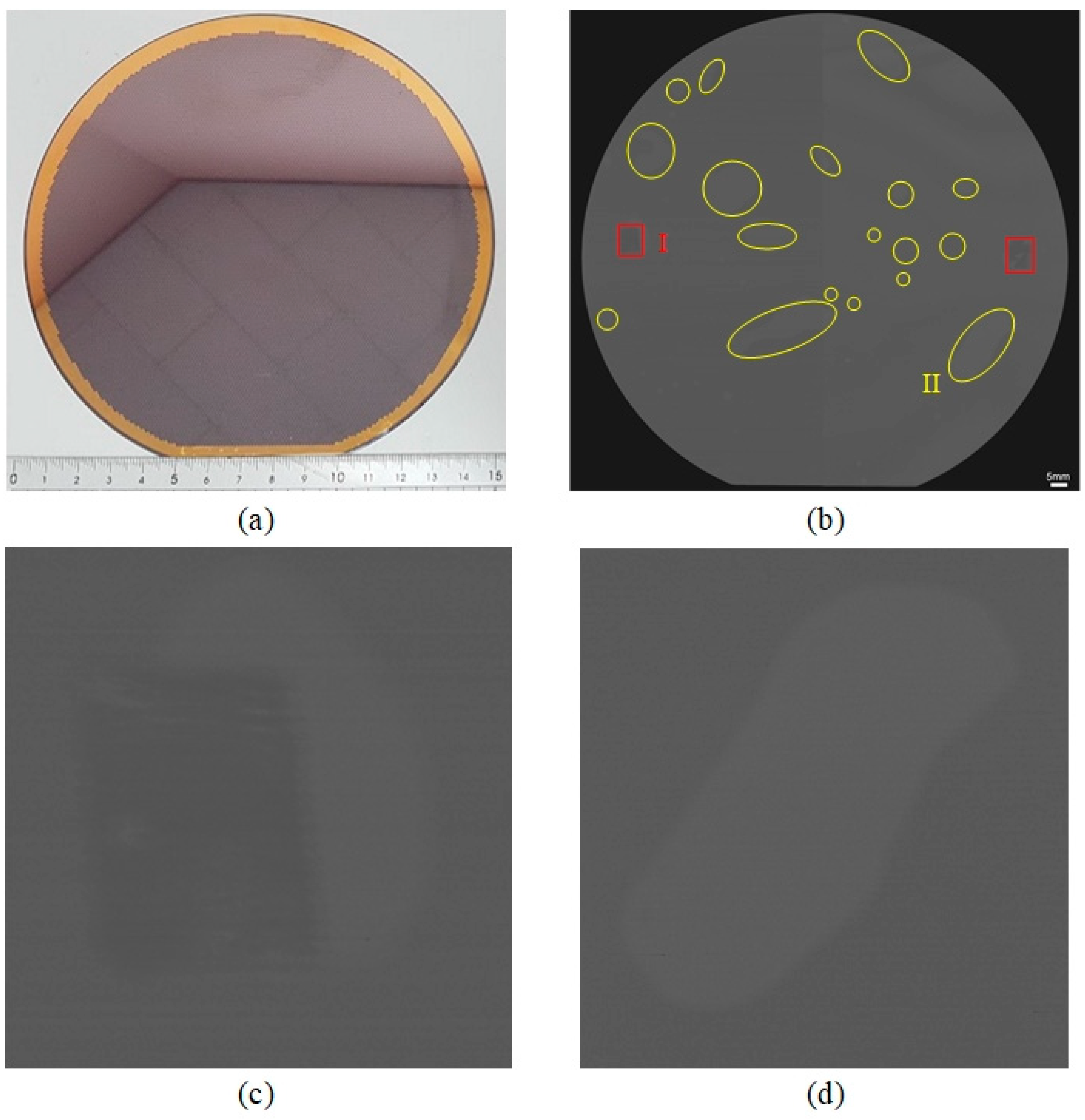
| Input | Value |
|---|---|
| Simulation time (t) | 0.2 s |
| Time step (Δt) | 10−6 s |
| Flow velocity (U) | 12 m/s |
| Outlet pressure (p) | 101.325 m2/s2 |
| Kinetic energy (k) | 0.429 m2/s2 |
| Dissipation rate (ε) | 286.785 m2/s3 |
Disclaimer/Publisher’s Note: The statements, opinions and data contained in all publications are solely those of the individual author(s) and contributor(s) and not of MDPI and/or the editor(s). MDPI and/or the editor(s) disclaim responsibility for any injury to people or property resulting from any ideas, methods, instructions or products referred to in the content. |
© 2024 by the authors. Licensee MDPI, Basel, Switzerland. This article is an open access article distributed under the terms and conditions of the Creative Commons Attribution (CC BY) license (https://creativecommons.org/licenses/by/4.0/).
Share and Cite
Pham, V.H.; Tran, L.H.; Choi, J.; Truong, H.-S.; Vo, T.H.; Vu, D.D.; Park, S.; Oh, J. Novel Water Probe for High-Frequency Focused Transducer Applied to Scanning Acoustic Microscopy System: Simulation and Experimental Investigation. Sensors 2024, 24, 5179. https://doi.org/10.3390/s24165179
Pham VH, Tran LH, Choi J, Truong H-S, Vo TH, Vu DD, Park S, Oh J. Novel Water Probe for High-Frequency Focused Transducer Applied to Scanning Acoustic Microscopy System: Simulation and Experimental Investigation. Sensors. 2024; 24(16):5179. https://doi.org/10.3390/s24165179
Chicago/Turabian StylePham, Van Hiep, Le Hai Tran, Jaeyeop Choi, Hoanh-Son Truong, Tan Hung Vo, Dinh Dat Vu, Sumin Park, and Junghwan Oh. 2024. "Novel Water Probe for High-Frequency Focused Transducer Applied to Scanning Acoustic Microscopy System: Simulation and Experimental Investigation" Sensors 24, no. 16: 5179. https://doi.org/10.3390/s24165179
APA StylePham, V. H., Tran, L. H., Choi, J., Truong, H.-S., Vo, T. H., Vu, D. D., Park, S., & Oh, J. (2024). Novel Water Probe for High-Frequency Focused Transducer Applied to Scanning Acoustic Microscopy System: Simulation and Experimental Investigation. Sensors, 24(16), 5179. https://doi.org/10.3390/s24165179






